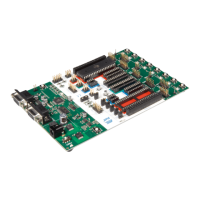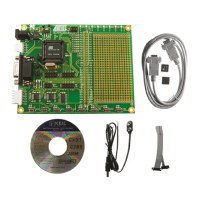What to do if the Atmel AVR STK500 Controller AVR device cannot be programmed?
- Mmary14Aug 17, 2025
If the Atmel Controller AVR device cannot be programmed, check the following: * Ensure the PC serial cable is connected to the PC COM port and the RS232 PROG port. * Verify the AVR device is inserted in the correct socket with the correct orientation, matching the notch on the AVR socket with the notch on the AVR device. * Confirm the target ISP header is connected using the 6-pin flexible cable from the ISP6PIN header to the correct SPROG target ISP header. * Make sure the jumper settings are set to the default setup. * If the memory lock bits are programmed, erase the memory before programming.


